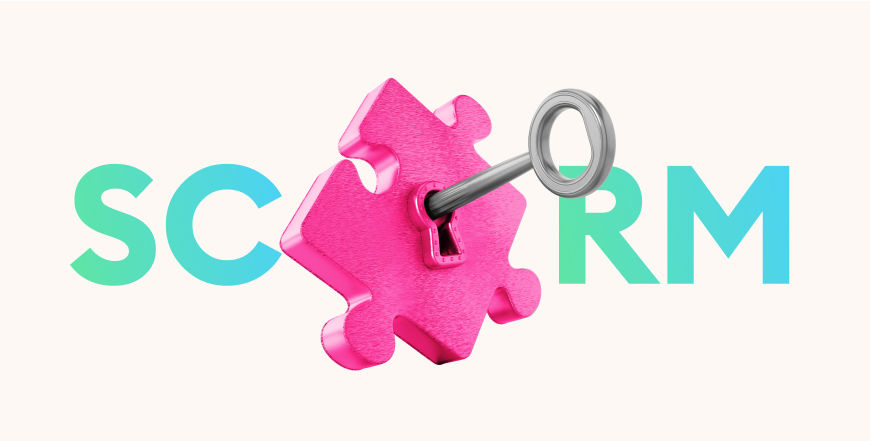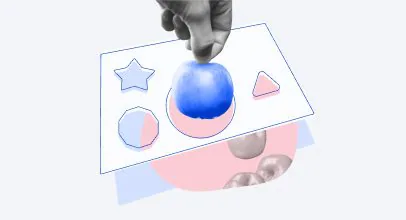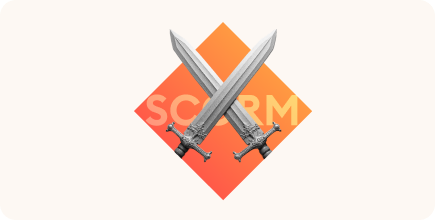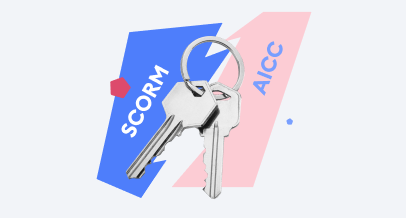xAPI vs. SCORM: Choosing the Right Standard
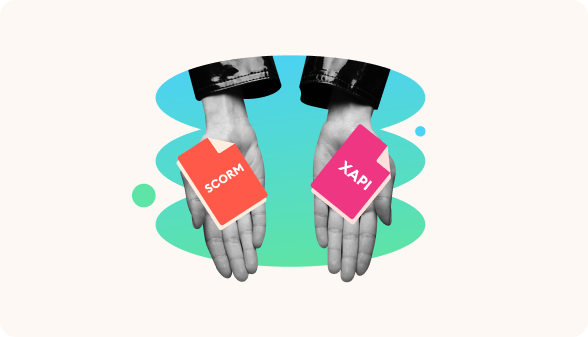
If you’re involved in education or corporate training, you’ve probably come up against the common issue of xAPI vs. SCORM. Both of these eLearning standards ensure that your course will work across different platforms; they also play a crucial role in tracking learning-related activity.
Are you designing a course, looking to improve data tracking, or selecting solutions for employee training? Then it’s vital to understand the differences between the two specifications.

- Definition and benefits of SCORM
- Definition and benefits of xAPI
- Tracking capabilities of both xAPI and SCORM courses
- Recommendations when choosing between xAPI and SCORM
Let’s get started.
What Is SCORM?
SCORM (Shareable Content Object Reference Model) is a set of technical standards used in eLearning to optimize content creation and distribution.
This set was developed by the ADL (Advanced Distributed Learning) initiative in 2001. It was conceived as the answer to the growing industry requirements for standardization and interoperability and remains popular.
In a nutshell, SCORM enables the standardized creation, packaging, delivery, and tracking of eLearning content. This makes learning materials compatible with and functional on different learning management systems (LMSs).
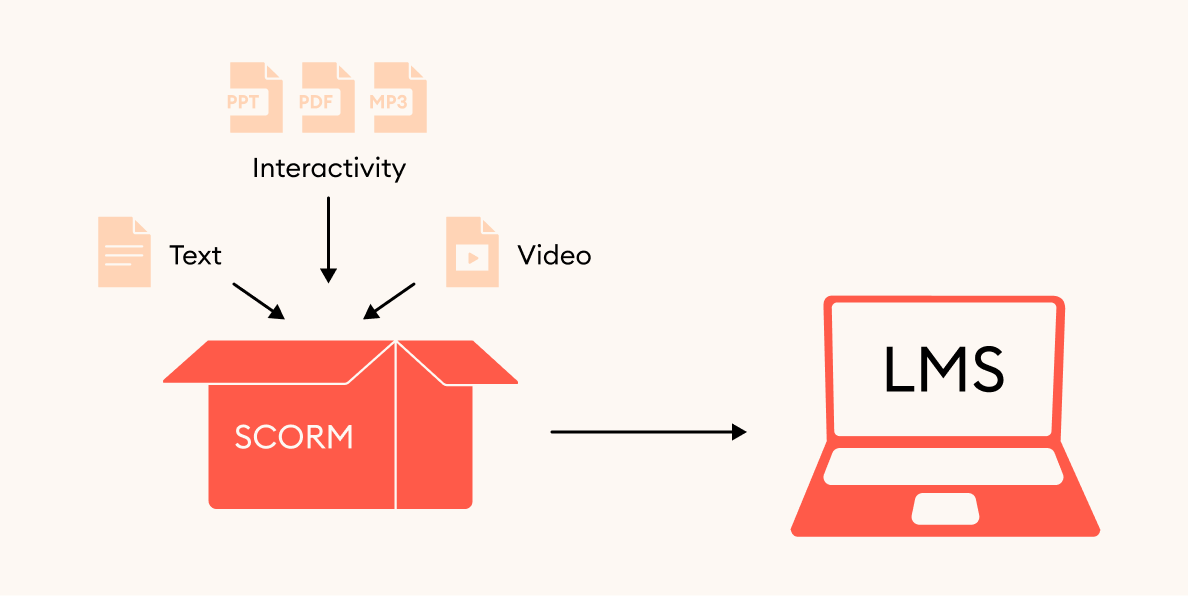
SCORM enables the tracking and reporting of learner progress because it standardizes how this data is exchanged between eLearning content and learning platforms. For instance, you can monitor content completion status, test pass/fail status, scores, and other key performance indicators directly in your LMS if your course content is in the SCORM format.
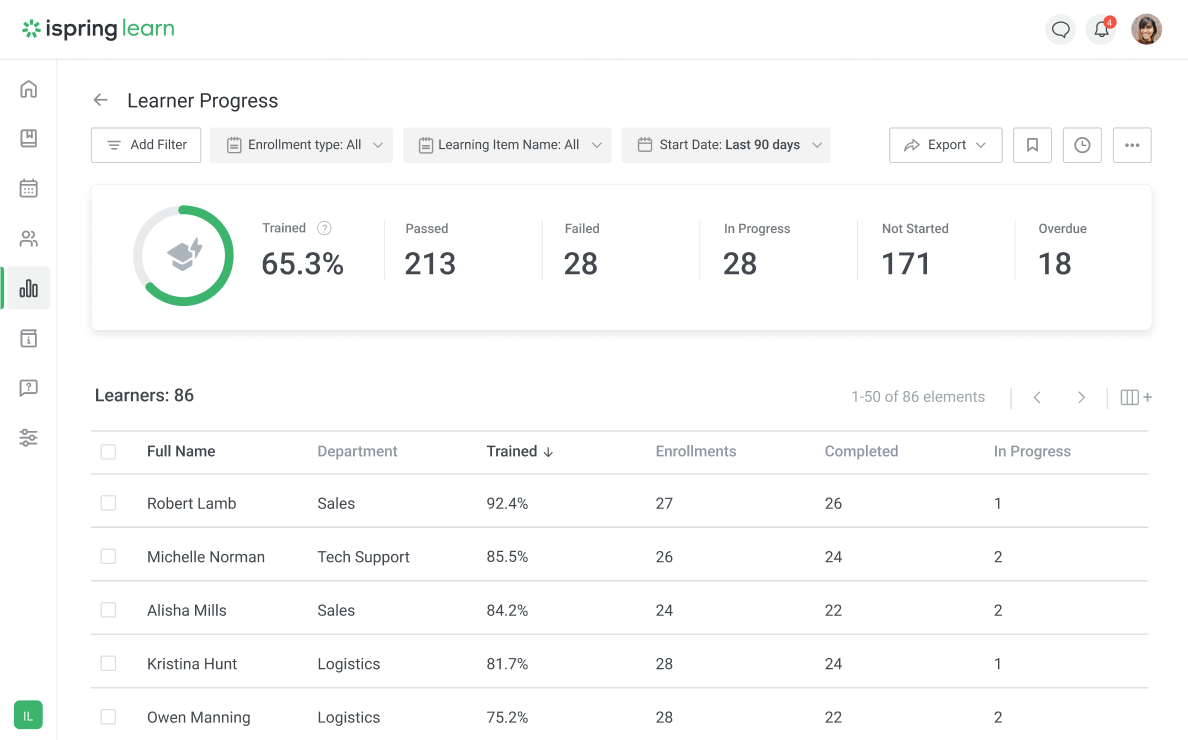
How SCORM works
SCORM-compliant courses are typically organized into modules, with each module containing interactions, multimedia elements, and assessments. These modules are saved as a SCORM package in a standardized format that can be easily imported into any learning management system that supports SCORM. Moreover, there are several other places for hosting SCORM content if you want to share it but are not using an LMS yet.
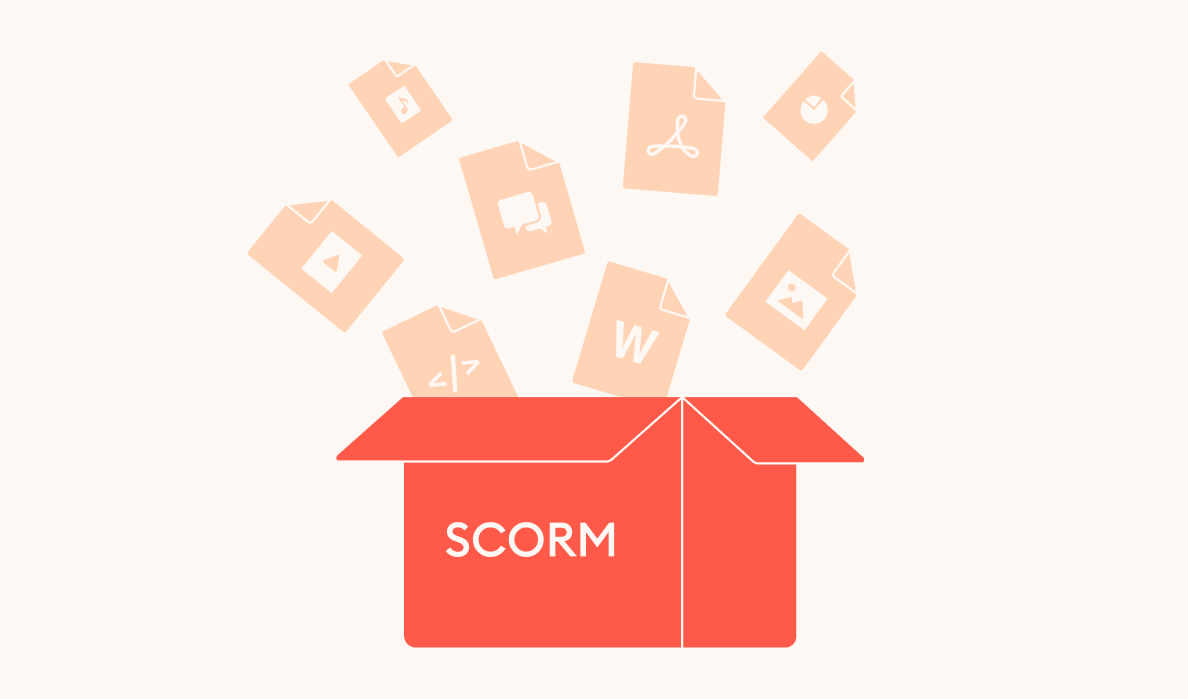
Since the content is packaged using SCORM standards, it’s easily shared and reused across different systems (provided that they are SCORM compliant). This reduces content development costs and provides a consistent learning experience across multiple platforms.
SCORM versions explained
There are currently three existing versions of SCORM: 1.1, 1.2, and 2004. The first version, SCORM 1.1, was not widely adopted. But SCORM 1.2, which was introduced in 2001, remains relevant and is still widely used.
A more advanced edition, known as SCORM 2004, was introduced in 2004 and has three iterations, or “editions.” Due to its enhanced features, SCORM 2004 has become the most commonly used SCORM standard. For a detailed breakdown of the differences between the most popular versions, see our SCORM 1.2 vs. SCORM 2004 comparison.
Benefits of SCORM
As mentioned, SCORM is widely accepted as the eLearning industry standard, and for good reason. Here are some of the greatest benefits of SCORM-compliant content.
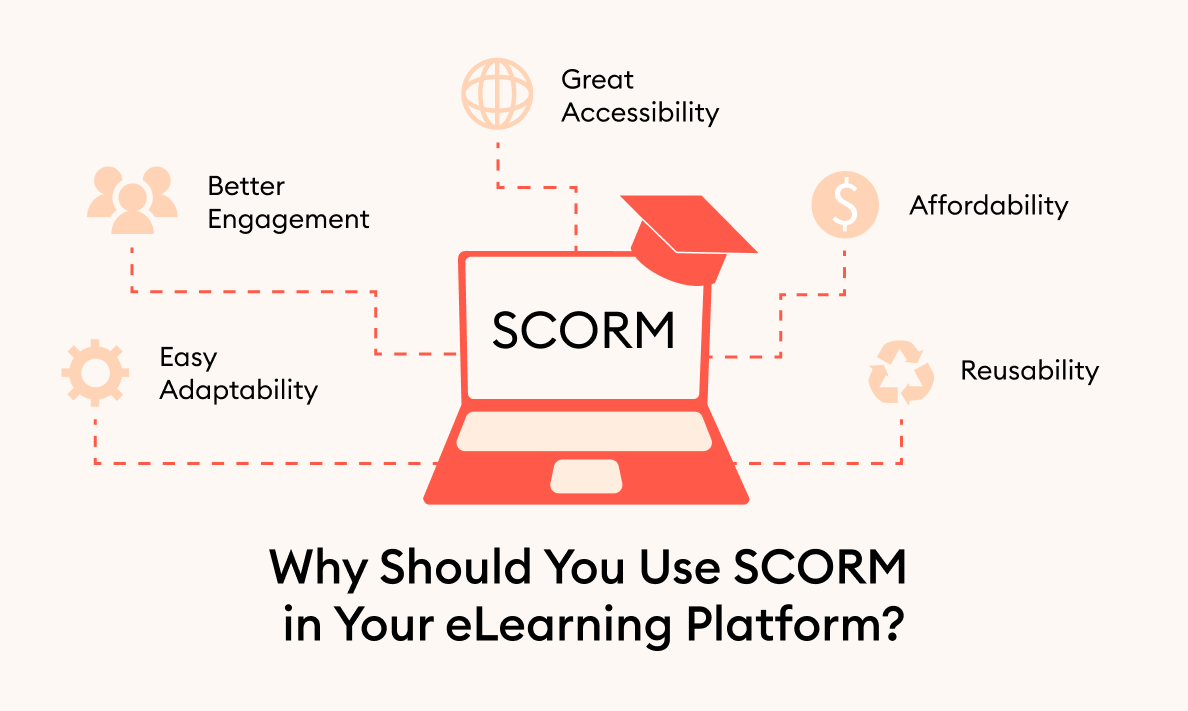
- Industry-backed. SCORM has widespread industry support, meaning there is a wealth of information, assistance, and resources for implementing it.
- Highly compatible. It integrates seamlessly with a wide variety of eLearning software. This provides more freedom in choosing the tools and ensures an easy and accessible training experience.
- Enables progress tracking. Thanks to SCORM, learners can pick up where they left off during their previous session in a course. Their progress will be saved until the next session, allowing them to continue without losing their place.
- Reusable content. SCORM-compliant content can be easily shared and reused in new courses, reducing the costs of content development.
- Solid reporting capabilities. This allows for the tracking of key metrics, such as course completion status, learner progress, and test scores.
- Sequencing. Sequencing enables you to control the order in which learners access course modules. However, this option only works in SCORM 2004.
While these benefits are still relevant, the eLearning landscape has changed significantly in recent years. The new requirements from both course designers and learners have led to the creation of a next-generation eLearning standard that became known as xAPI, or Tin Can.
When to use SCORM
You’ll probably prefer SCORM when:
- You don’t need lots of data. If basic metrics like completion rates and test scores are sufficient, there’s probably no need to look beyond SCORM.
- Budget constraints are an issue. SCORM tends to be more cost-efficient while still being compatible with most LMSs.
- Fast implementation is required. The xAPI workflow is trickier to set up, while SCORM provides a wealth of documentation and a smoother implementation process.
- You don’t have exceptional eLearning needs. For traditional eLearning experiences like straightforward courses and typical content formats, SCORM is more than sufficient.
- Your current LMS supports SCORM. Does your system support SCORM and not xAPI? Then maybe this is the format you should stick with to avoid tedious migration to another platform.
What Is xAPI?
xAPI, which stands for Experience API, was developed in 2013 as a more advanced alternative to SCORM. It can collect and track much more data across multiple digital learning platforms and devices.
With xAPI, you can gather and share such details as resources accessed, actions performed, time spent, assessments completed, and outcomes achieved.
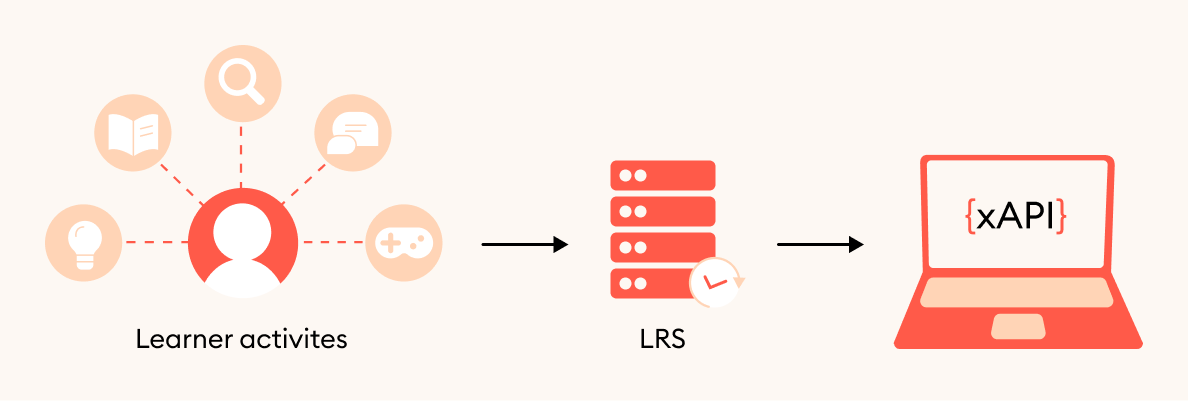
While SCORM concentrates on tracking basic metrics like training assessment scores and completion rates in a learning management system (LMS), xAPI provides a fuller insight into learner experiences. For instance, it can give you detailed information about when and where learners access training content and exactly how they interact with it.
Technically, it’s done through xAPI (Tin Can) statements. These statements enable the collection and sharing of granular data about learner experiences, behaviors, and outcomes across different platforms.
How xAPI statements work
All xAPI statements comprise three main elements:
- An actor (who performed the action) — usually presented by a user ID in the system or their email address.
- A verb (the action) — “completed,” passed,” “attended,” “interacted,” etc.
- An object (the target of the action) — typically a course, module, quiz, video, or another learning resource that is presented by a unique URL or activity ID.
Thus, “Susan passed the quiz” is an example of an xAPI statement.
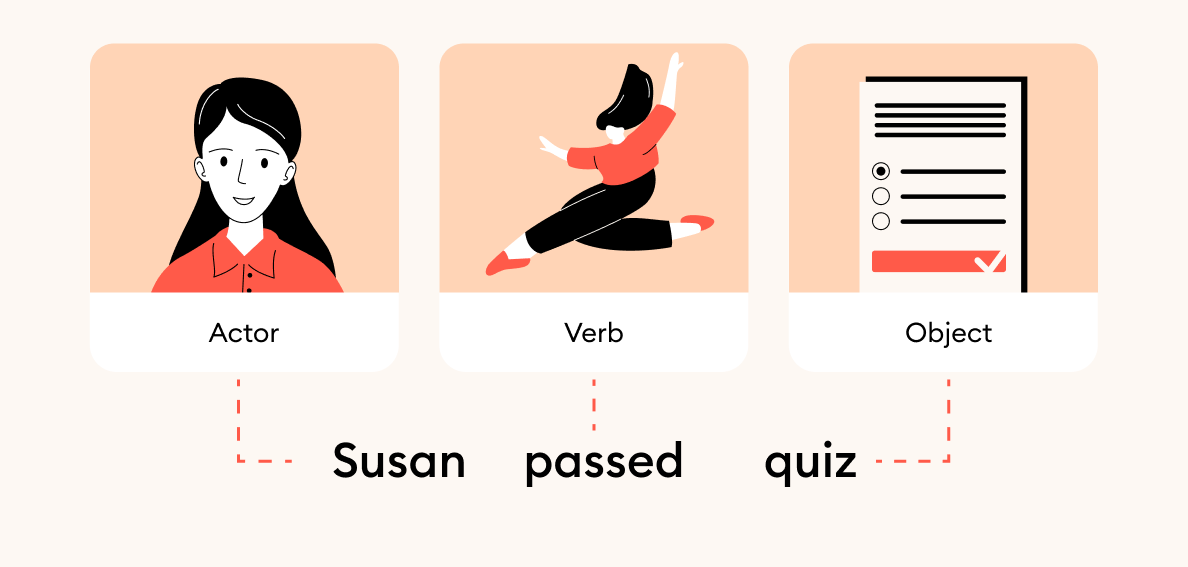
If necessary, additional metadata can be included in the statement to supply more context and details about the learning experience.
Unlike SCORM, which stores learner data inside your LMS, xAPI uses an external storage called LRS (Learner Record Store). This makes xAPI implementation more complex and therefore expensive. But it also enables the collection of learner data from a variety of platforms and devices — and not just from your LMS.
“The activity provider can be anything you learn from, like an LMS, a standalone course, a video game, or a simulator. Whether you’re watching a video, finishing a quiz, joining a discussion, or practicing in a simulation, xAPI records each step, creating a full picture of your learning experience.”
Storing data from all of these sources in an LMS would not be possible, hence the need for external storage. Here’s what xAPI statements look like in Veracity, one of the LRSs commonly used by course designers and admins:

Source: Veracity
Benefits of xAPI
xAPI might be the newest eLearning standard on the block, but does that make it worth using in your learning process? We’ve rounded up the most notable benefits of API (Tin Can) to help you make that call.
- Advanced tracking capabilities. Tracks learning experiences beyond eLearning courses, collecting data from training simulations, mobile apps, games, and social platforms.
- More detailed insights. Provides comprehensive information about learner behaviors, preferences, and performance outcomes. This allows designers to build highly personalized learning experiences based on individual learner needs, behaviors, and preferences.
- Smooth offline learning. xAPI courses can work without Internet access by default. When learners take courses offline, their progress is saved and automatically updated as soon as the user gets back online. While SCORM content can also work offline, it is dependent on the specific LMS’s capabilities.
- Enhanced mobile learning. xAPI content works across all kinds of devices, such as smartphones and tablets, with no limitations.
- Enhanced security. xAPI uses the oAuth protocol to ensure better data protection and privacy. SCORM, on the other hand, is more vulnerable to malicious actors.
- More flexibility. SCORM courses work across a multitude of LMSs, but xAPI gives even more freedom. Since xAPI uses external storage for tracked data, you can upload Tin Can content anywhere — to your website, for example. Moreover, you can add data from offline learning activities to the LRS as well.
- Future-proofing. As the newer standard, xAPI has a good chance of staying relevant for a long time and getting constant updates. This ensures that your xAPI courses will remain both relevant and highly compatible.
These benefits empower eLearning content developers to make more informed, data-driven decisions when designing and improving their courses.
Note that, although SCORM and xAPI are the most commonly used eLearning standards, they are not the only ones. To learn more about other formats such as cmi5 and AICC, read our eLearning standards comparison guide.
When to use xAPI
The Experience API standard will probably be the right fit when:
- Advanced tracking is a priority. If you plan to collect precise data across devices and platforms, xAPI is definitely what you need.
- You use several platforms. If your content delivery tools go beyond a traditional LMS to include games, simulations, mobile apps, etc., SCORM won’t be enough.
- Offline learning is a big part of your strategy. While SCORM can also work offline, xAPI offers much more flexibility in this regard.
- You use cutting-edge learning tools. Collecting data from AR, VR, and other interactive simulations is only possible with xAPI.
- Planning for the future. xAPI is a more modern and future-proof eLearning standard.
Another point is that xAPI is more secure in more ways than one. With SCORM, tech-savvy users can find a workaround and “pass” a course without actually taking it, as this expert points out. xAPI won’t let them do it.
“xAPI is immutable, meaning someone can’t simply pass a course by making a Javascript call like with SCORM.”
SCORM vs. xAPI: Key Differences at a Glance
Now that you understand how both these popular learning standards work, let’s take a quick look at the key differences between them. For this overview, we will not be distinguishing between versions of SCORM because they’re similar, despite their minor differences.
| SCORM | xAPI | |
|---|---|---|
| Data storage | Stores all data within the LMS | Requires external independent storage (LRS) |
| Tracking capabilities | Tracks basic metrics inside the LMS, such as completion rates, test scores, and time spent | Tracks a variety of metrics, providing detailed insights into learner experiences |
| Flexibility | Tracks learner data within a single LMS | Captures learner data across multiple platforms and devices; plus, you can add data from offline activities too |
| Course structure and packaging | Strictly defines course structure and packaging, making the content easy to launch in any SCORM-compliant LMS | Doesn’t define course structure, making it easy for learners to switch between different kinds of platforms |
| Mobile-friendliness | Mostly desktop-oriented, mobile compatibility depends on the LMS and the authoring tool used to create the SCORM course | Works seamlessly across all kinds of platforms and devices |
| Offline access | Offline access can work if supported by the LMS | Offers offline access by default |
| Security | Generally considered less secure | Generally considered more secure because it uses an oAuth protocol to protect data |
What You Can Track with SCORM and xAPI
Perhaps the biggest question when comparing xAPI and SCORM 2004 is regarding their tracking capabilities. This aspect is often the decisive factor when choosing the right standard for your needs. In the table below, we take a closer look at the specific metrics you can track with SCORM and xAPI.
| xAPI | SCORM 2004 | |
|---|---|---|
| Learner data | Advanced tracking of learner experiences across multiple platforms | Tracks basic metrics, such as course completion, test scores, and time spent on the course |
| Interactions | Records granular data on learner interactions | Basic tracking of course progress |
| Media usage | Captures use of multimedia elements and resources | Limited capability to capture multimedia usage |
| Assessment | Records detailed assessment data — can record multiple scores | Records assessment scores |
| Social | Supports the in-depth capturing of social learning interactions | Limited support for tracking social activities — in some cases, forums and chats can be integrated with SCORM content |
| Offline | Facilitates the tracking of offline learning experiences | Primarily designed to track online learning |
| Adaptive | Supports highly adaptive learning pathways, allowing learners to access the course across a variety of platforms and pick up where they left off; adjusts learning content suggestions based on the learner’s performance | Supports highly personalized learning paths, but only within the constraints of the LMS-based structured course |
As you can see from the above chart, xAPI provides a complete picture of eLearning activities across multiple platforms and systems. This includes deep insights into specific behaviors like the total time spent on an interaction, video views, use of knowledge bases, and interactions with social learning resources.
Conversely, while data from SCORM courses are more limited, this standard covers all key tracking metrics that most organizations need. It’s also a more accessible and straightforward way to capture data on employee training.
How to Choose Between xAPI and SCORM
Knowing the difference between SCORM and xAPI is an important first step toward making informed decisions about the tools and content you choose for your eLearning initiatives. Yet there are also other factors to consider when deciding which standard best aligns with your organization’s needs.
To facilitate your analysis, we’ve put together a checklist you can use in regard to deploying Experience API or SCORM courses.
| Choosing between xAPI and SCORM | |
|---|---|
 Assess your current needs Assess your current needs | Consider the metrics you need to track and the learning experiences you plan to use. |
 Evaluate reporting requirements Evaluate reporting requirements | Look at specific use cases relevant to your organization to understand the level of detail you need from your reports. |
 Consider your resources Consider your resources | Assess the tools, resources, and expertise needed to create and deliver learning content with each of the two standards. |
 Plan for future growth Plan for future growth | Consider your growth and expansion perspective to understand how much insight and flexibility you might need in the future. |
Let’s take a closer look at each of these aspects. We’ve also asked Alexander Salas, expert learning experience designer, LMS administrator, and consultant, to contribute his insights to make this section even more helpful.
1. Assess your current needs
The first step when choosing between SCORM and Tin Can is to conduct a detailed analysis of your organizational needs.
Start by considering the following:
- The level of detail you need from data tracking (more on that a bit later)
- The type of learning experiences you plan to deploy, such as quizzes, games, simulations, blended learning, etc.
Also, remember to find out how compatible each of the standards is with your existing systems, i.e., whether your learning platform supports SCORM (and which version), xAPI, or both.
Thoroughly assessing your needs will help you make a more informed decision that aligns with your business goals.
Here’s a more detailed breakdown of some common data tracking requirements and each eLearning standard’s ability to fulfill them.
| Standard | SCORM | xAPI (Experience API, aka Tin Can) |
|---|---|---|
| Video views | Only tracks the completion of a video | Tracks the time spent on a video and the number of views |
| Quiz responses | Records answers, scores, and the time taken to answer | Records individual question responses, scores, the time taken to answer, and other relevant data |
| Course completion rates | Tracks overall eLearning course completion rates | Tracks detailed completion status (captures activity on specific elements or sections within the training) |
| Interaction with learning materials | Captures limited data on predetermined interactions only | Captures granular data on user interactions (clicks, navigation, activity on drag-and-drop exercises, etc.) |
| Time spent learning | Reports the total time spent on a module or course | Provides granular tracking of time spent on individual activities in a module or course |
| Completion of learning objectives | Records when a learner completes objectives | Records detailed information on which objectives a learner has completed and what that objective covers (policies, topics, regulations, etc.) |
As can be seen in the table above, Tin Can offers much deeper insights into learners’ experiences and performance. However, this level of detail is not always necessary. So, make sure you understand if you actually need it and why before you make your choice.
2. Evaluate reporting requirements
As mentioned earlier, reporting is a big factor in the xAPI vs. SCORM debate, so getting clear about your organization’s reporting needs is crucial. And that includes understanding the level of detail needed.
Here are some real-world examples to illustrate this point.
Let’s say you’re in charge of training in the aviation industry. Plane simulators (powered by virtual reality) are one of the most popular types of training for pilots and airline workers.
In this use case, you will want to track detailed data on learner activity and behaviors during the simulation, such as which physical buttons learners pressed during landing. Considering the depth of the data you need in order to capture this information accurately, xAPI could be the best option.

Now let’s suppose you’re deploying sales training simulations. What you want to know here is how each learner answered each stage of the scenario and if they passed the simulation.
In this case, a SCORM package more than covers your needs, providing clear insight into learners’ weak areas. Just make sure to run SCORM validation before launching the course to avoid accidental errors.
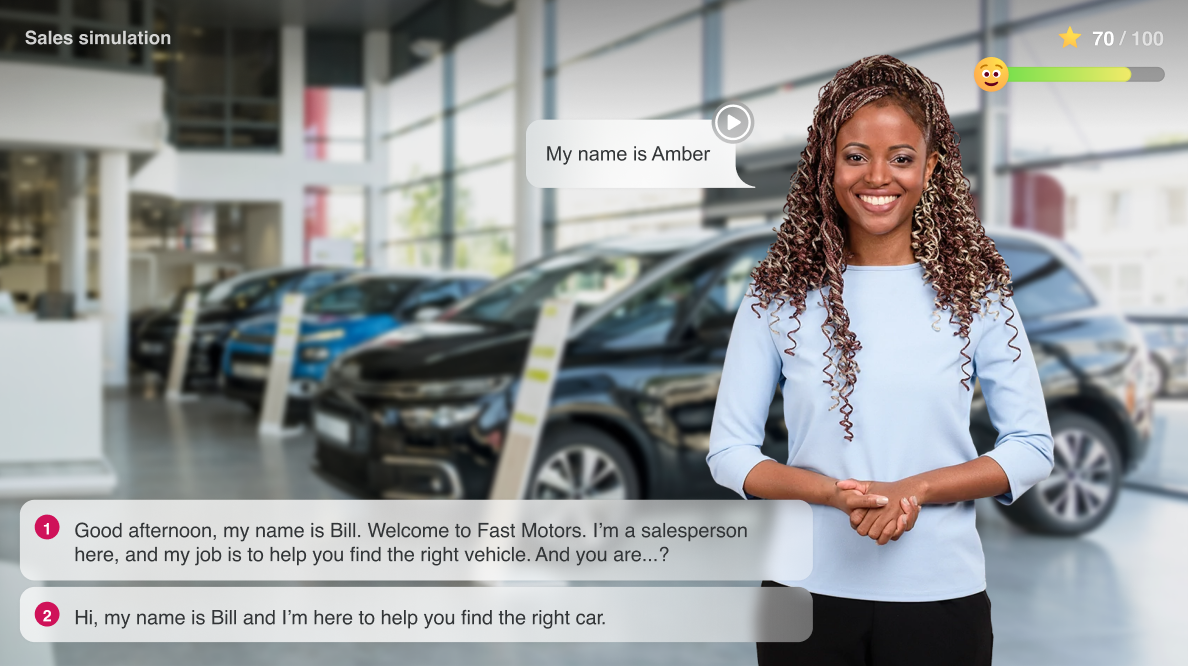
To restate, you cannot overestimate the importance of analytics. Deciding exactly what you want to track affects the course design process, so it’s crucial to choose the standard early on, as stated here:
“Course designers should consider the choice between SCORM and xAPI from the analysis phase because xAPI can do so much more than SCORM. If you wait too long, it will be hard to retrofit designs.”
Although the difference is mostly about analytics, “it can completely modify a design depending on what is being measured,” the expert explains.
3. Consider your resources
The next crucial step to choosing between Tin Can and SCORM is to understand what you have at your disposal. This includes the tools, resources, and expertise you’ll have available to create and deliver learning content with either of the two learning standards. When you know that, you’ll have a clearer picture of what you’ll need in order to launch and manage your eLearning programs.
Consider the following:
- How long is the implementation process likely to take with each option?
- Will you have to allocate additional funds to purchase more software or hire technical experts?
- Is community support and guidance available?
When it comes to technical solutions, it might get confusing. So, we’ve compiled a table of the most common tools needed to develop and deploy learning content using each specification.
| Tool | SCORM | xAPI (Experience API) |
|---|---|---|
| Learning management system (LMS) | SCORM-compliant LMS | xAPI-compliant LMS with a built-in LRS (Learning Record Store) or an external LRS |
| Content authoring tool | SCORM authoring tools | xAPI-compliant authoring tools |
| Learning Record Store (LRS) | N/A | Needed to store and track xAPI statements (some LMSs have built-in LRSs) |
| Reporting and analytics tools | SCORM-compliant reporting tools (typically built into the LMS) | In some cases, an additional xAPI-compliant reporting and analytics tool is needed to provide advanced insights into the data |
4. Plan for future growth
Forecasting future needs can help you make the right decision in the present. On the one hand, xAPI is a more flexible and adaptable new technology. Yet SCORM has widespread adoption and compatibility in its favor.
What it really comes down to is how you see your organization’s learning initiatives growing. Will the standard you choose support that future growth and allow you to reach your long-term goals?
For example, you might currently have a small workforce with a dozen employees to train. As a small business, you might not have a lot of resources to spend on educating your staff, but you can afford a personalized approach where you or another person in charge oversees the learning progress in the “manual mode.”
In this scenario, SCORM will be more than sufficient. But if you plan to expand, the “manual mode” will likely become unsustainable. In that case, you’ll need more insights and flexibility to upscale your eLearning. And this is where Tin Can, with its broader capabilities, will come in handy.
Ultimately, finances are the decisive factor when choosing between the two eLearning standards in question for the long run, according to Alexander Salas.
“When we consider the perspective of 5-10 years, the choice of SCORM or xAPI comes down to money. xAPI requires a Learning Record Store (LRS), and that’s an additional cost.”
Are you prepared to invest? Weigh your options carefully.
xAPI and SCORM: Can You Use Both?
But what if you can’t decide just now or you simply don’t want to? Can you just use both standards? The quick answer is — yes, you definitely can. You don’t necessarily have to choose between the standards if you can’t make up your mind or think your eLearning strategy will benefit from using them both.
If you want to cover all the bases, just choose eLearning authoring tools that support both these standards. One way is to opt for iSpring Suite to quickly create awesome learning materials and export them in either SCORM or xAPI format, depending on where you plan to use them.
Does your learning platform support xAPI? Then export your course in the xAPI format. And if the LMS only supports SCORM, go for this format instead. With iSpring Suite, you can also export your course in either of these formats to save it to your device for later use. For learning systems that support both SCORM and xAPI, just pick the one that better aligns with your goals.
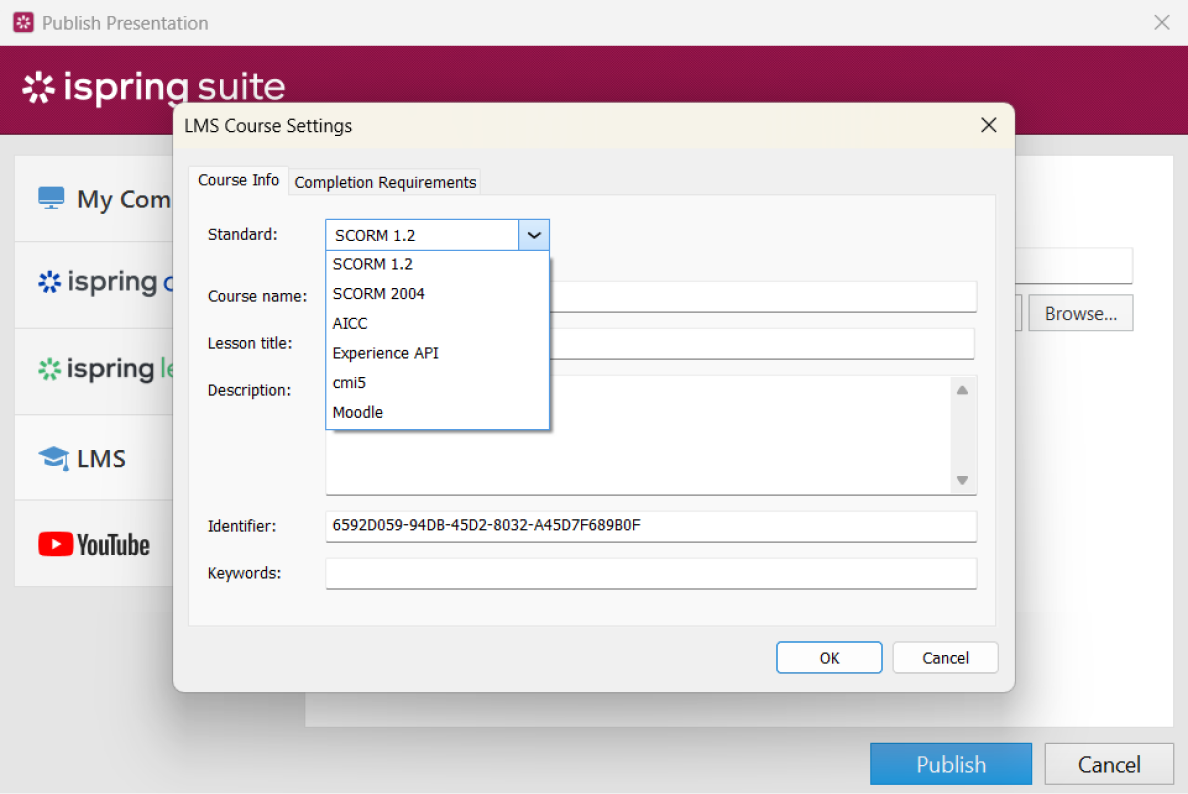
iSpring Suite
Fully-stocked eLearning authoring toolkit for PowerPoint. No training required to start!
Conclusion
While Tin Can has emerged as the latest and most advanced specification, SCORM remains the common industry standard. At the end of the day, the choice between the two depends on your organization’s needs, resources, and level of expertise.
When you just need a straightforward solution that works, sticking with a tried-and-tested standard like SCORM will garner the best results. Conversely, if your company plans to build diverse learning experiences or you need exhaustive data on each activity, xAPI (Tin Can) could be your best bet.
The good news is, you don’t always have to choose just one. Instead, you can keep your options open with an authoring tool that supports both SCORM and Tin Can. Book a free iSpring Suite demo to learn more about this tool and how it can fulfill your company’s current needs while also supporting your long-term goals.
